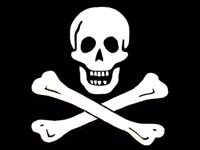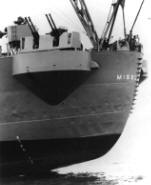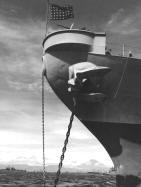|
Toll free 800 - 845-1140 |
|
Shipping
will be added to all orders, we always endeavor to give you the
best rate >>> Click for Rates. |
If you have any
questions or need help email us, call us or click here for HELP


Kit# SS117A - $26.50
PIRATES IN THE BAHAMAS
The roles of pirates and privateers are an integral part of the history of
the Bahamas. However, in many cases, it is impossible to separate the facts
from the legends. The activity of many of these pirates is well documented
in what is now Nassau, but their activity in the "out islands" is less well
documented. They came to these islands to rest and relax. They also came to
these islands to careen their vessels in the shallow creeks, where they
cleaned and repaired their hulls. They knew then as we do now that a clean
bottom is essential for good boat speed. In many cases the success of a
"cruise" depended upon the ability to speedily overtake their prey and out
run their pursuers. Be assured that the pirates invested more effort to
clean the hulls of their vessels than they did their own personal hygiene.
The distances and geographical features which made settlement and government
difficult in these islands, also served to provide an ideal environment for
those hiding from the law and authority. Charles Town, later Nassau, on the
island of New Providence, became a major headquarters for buccaneers,
pirates, and privateers. For the purist, there are clear distinctions to be
made between these various labels, however for the pragmatist, the line
becomes somewhat blurred. Buccaneering arose spontaneously, among the
French, against the Spanish. This unauthorized reaction was soon imitated,
successfully, by the English. Sir Henry Morgan was one of the early
successful "buccaneers" who made life miserable for Spanish shipping. He,
among others made Nassau his home base. The Spanish, in reprisal for his
successes, nearly demolished Charles Town (Nassau). During war, this was
considered legal so long as it was directed toward the enemy. Looting became
legitimate, but few could contain themselves to their legal targets. Most
believe the earlier Capt. Wyatt (1594) stayed for the most part on the legal
side of that very fine line . The first recorded act of "piracy" in the
Bahamas occurred in September 1713. A French ship had sailed from Santo
Domingo bound for France. The ship was loaded with sugar, gold, and indigo.
The owner of the cargo was on board. Off the island of Inagua, a fire broke
out. While the pilot worked to put out the fire, the master of the vessel
ran her aground on a shallow sand bar, with no apparent damage to the ship.
The master made no attempt to refloat the ship, but he just happened to have
"friends" in the area who appeared in small boats to "save" the cargo.
The
owner of the cargo and the pilot of the vessel later complained in court.
I'm sure you can imagine the difficulty of proving such allegations. In
1714, the Spanish treasure fleet carrying the Royal taxes back to Spain ran
into a hurricane and was washed ashore on the shallow reefs of Florida.
While the Spanish authorities were attempting salvage operations, Henry
Jennings catapulted his career as a privateer by attacking and robbing the
poorly defended salvage divers. He then found it expedient to establish a
"home base" in Nassau, where it was relatively easy to elude the Spanish
Navy.
Jennings and many others of his "profession" found New Providence an ideal
home base. The harbor was well protected and had two entrances, which made
it extremely difficult for a single ship to completely "bottle-up" the
harbor. Additionally there was an ample supply of fresh water, fish, turtle,
and wild game for repositioning the vessels.
The island was well positioned between the westbound shipping lanes carrying
needed provisions from Europe, and the eastbound shipping lanes taking gold
and silver back to Europe. Other pirate captains soon joined Jennings and
his band. The present site of Nassau literally became an impromptu city of
two to three thousand inhabitants living in tents, huts, and onboard ships.
Jennings became the unofficial mayor. The pirate economy prompted a
significant "service industry" of traders, followers, and smugglers. In
today's jargon, they developed a significant "spin-off" industry,
"fencing"
the stolen merchandise. Redistribution channels included fellow pirates as
well as legitimate markets in the Carolinas and the Spanish Main.
New Providence probably offered the wildest frontier of the entire New
World. Yet these uneducated, unruly rascals seemed able to govern themselves
with a kind of democracy unknown in the civilized world at that time! These
independent minded outlaws possessed the same spirit of independence and
sense of freedom which drove Alexander Hamilton and Thomas Jefferson down a
more constructive path. Not only did these pirate captains run their ships
democratically, but they also established a democratic society in New
Providence. This sociological phenomenon is quite interesting when you
consider the fact that these individuals were not reared in a society where
voting was a household word! They also lacked intellectual contact with the
outside world. There has been no satisfactory explanation of how this
community derived its concept of self government. Jennings became the
recognized leader of this motley band, but, relying heavily on a council of
the other pirate captains, demonstrated uncanny "political sense".
Edward Teach, alias "Blackbeard", was one of those
pirate captains who made
a home base at New Providence. Teach was one of the few who rejected King
George I's amnesty offer in 1718. He chose to leave the Bahamas and pursue
his career in the Carolinas. "Blackbeard" intentionally promoted his image
as a brutal cutthroat, solely as an act of psychological warfare. Teach, a
natural leader and politician, struck a business "deal" with Governor Eden
of North Carolina. He agreed to pay the governor a percentage of his
profits. From this new base, he continued his successful career, until
Governor Alexander Spotswood of Virginia, commissioned Lieutenant Robert
Maynard and Captain Ellis Brand of the Royal Navy to hunt down the infamous
pirate. Lt. Maynard of the Pearl caught Blackbeard in shallow Ocracoke
Inlet, North Carolina. There, in a bloody battle, Maynard personally fought
Blackbeard to the death. At "autopsy", Blackbeard was found to have been
shot twenty three times and had numerous cutlass wounds. During his life, he
was credited with having fourteen wives. Some of his prowess can be credited
to the conch he ate while stationed in the Bahamas!
Historical info on Black Beard the Pirate.


